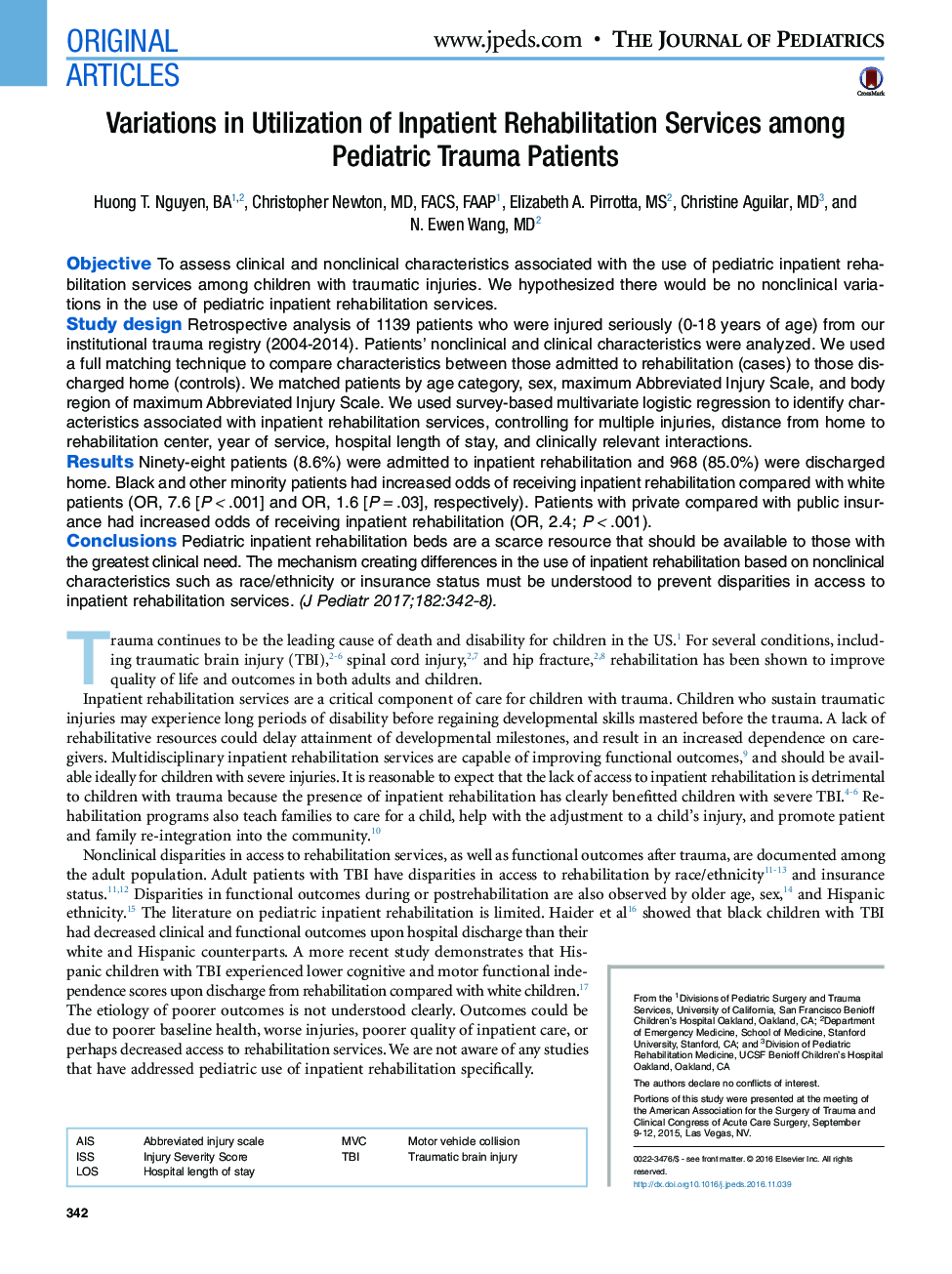| Article ID | Journal | Published Year | Pages | File Type |
|---|---|---|---|---|
| 5719696 | The Journal of Pediatrics | 2017 | 8 Pages |
ObjectiveTo assess clinical and nonclinical characteristics associated with the use of pediatric inpatient rehabilitation services among children with traumatic injuries. We hypothesized there would be no nonclinical variations in the use of pediatric inpatient rehabilitation services.Study designRetrospective analysis of 1139 patients who were injured seriously (0-18 years of age) from our institutional trauma registry (2004-2014). Patients' nonclinical and clinical characteristics were analyzed. We used a full matching technique to compare characteristics between those admitted to rehabilitation (cases) to those discharged home (controls). We matched patients by age category, sex, maximum Abbreviated Injury Scale, and body region of maximum Abbreviated Injury Scale. We used survey-based multivariate logistic regression to identify characteristics associated with inpatient rehabilitation services, controlling for multiple injuries, distance from home to rehabilitation center, year of service, hospital length of stay, and clinically relevant interactions.ResultsNinety-eight patients (8.6%) were admitted to inpatient rehabilitation and 968 (85.0%) were discharged home. Black and other minority patients had increased odds of receiving inpatient rehabilitation compared with white patients (OR, 7.6 [Pâ<â.001] and OR, 1.6 [Pâ=â.03], respectively). Patients with private compared with public insurance had increased odds of receiving inpatient rehabilitation (OR, 2.4; Pâ<â.001).ConclusionsPediatric inpatient rehabilitation beds are a scarce resource that should be available to those with the greatest clinical need. The mechanism creating differences in the use of inpatient rehabilitation based on nonclinical characteristics such as race/ethnicity or insurance status must be understood to prevent disparities in access to inpatient rehabilitation services.
